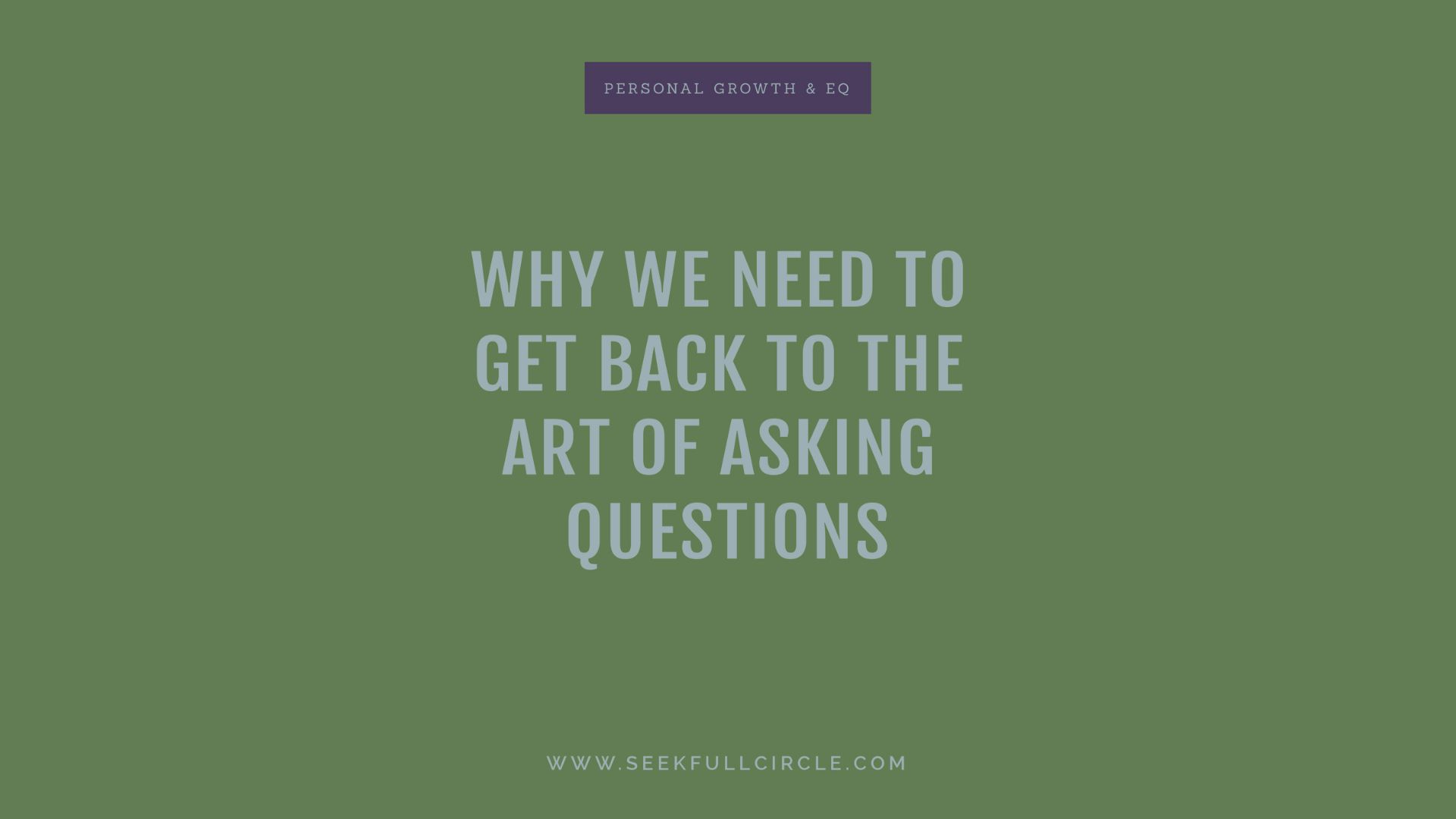
This month’s topic has been percolating in my brain for the last several weeks; mostly because I experienced the consequences of not applying it. Without question, life is full of hard lessons. It’s what we do with reflections from those hard lessons that ultimately make or break us. I’m hopeful I’m in the process of being made as opposed to being broken.
I’ve written before about the art of listening—a skill that appears to be waning in today’s constantly connected world. It’s time to bring to light another lost art (of which there are many to choose from): The art of asking questions.
The question dilemma
Before you question the validity of whether or not there is an art to asking questions, consider that as we grow older, our likeliness to ask questions decreases. As a child, you were more than likely rewarded for answering questions correctly at home and school. As an adult, that trend continues because those who answer questions are rewarded rather than those who ask them.
In fact, there are numerous examples of those who questioned conventional wisdom. They set what most people thought were unrealistic or unachievable goals, worked diligently to embrace their idea and, as a result, were considered reckless, outliers or half-a-beat-off compared with their contemporaries.
But a momentary side trip into specific examples of such people uncover those who have literally gone on to alter life as we know it: Ted Turner, Lee Iacocca, Henry Ford, Michael Dell, Bill Gates, Steve Jobs and Jeff Bezos, to name a few.
So, why aren’t a majority of people comfortable asking questions? In part, because we’re unaware of how different questions can lead people to different outcomes. Instead, we’re focused on making decisions in order to check tasks off lists and keep moving forward because worth is based on achievement.
According to an article contributed to Harvard Business Review, there are four types of questions that achieve four different goals. Other thought leaders have their opinions but this article’s approach fascinates me when I think about the process of guiding clients toward discoveries about their communication efforts.
HBR cites the unfortunate side effects of not asking enough questions; one of which is poor decision making. Those side effects further illustrate why it’s essential to make the time to ask more + better questions. Experience has taught me that when I make the choice of committing to asking more + better questions, the result is the ability to draw better conclusions that lead to more focused and effective direction. On the other hand, a short cut in an effort to save time + energy in the short run requires more work (and typically resources) in the long run.
Tips to master the art of asking questions
Identify the problem
I fondly recall a conversation The Honorable Mary Kramer, Iowa Senator and U.S. Ambassador to the Barbados and Eastern Caribbean and I had a couple of years ago. Mary’s extensive experience in human resources prior to her political service provided valuable insight into getting to the core of workplace issues. She encouraged me to begin with a simple yet powerful question: What problem are we trying to solve?
Consider timing
From that foundational query evolves the need to ask the right question at the right time. Timing is everything. But in our immediate gratification culture, we often don’t make the time + effort to figure out what the right questions are and when to pose them.
Stay focused
I’ve been amazed at how quickly a conversation can get off track when at least one person at the table isn’t committed to or assertive enough in steering discussions so that one fundamental question gets answered. Collaboratively seeking solutions empowers decisions that greatly impact the actions of individuals + teams moving forward.
While the concept of steering discussions seems easy enough, actually doing it is another story. According to Gallup, 70 percent of U.S. workers are not engaged at work. The consequence is that we’re less emotionally connected and less likely to be productive.
Be willing to be vulnerable
Social connection expert Brené Brown has spent her entire research career “fueled by a commitment to bring light to emotions, thoughts and behaviors that we all experience but never discuss. . .“ She sees our society’s lack of emotional connectivity rooted in our fear of being vulnerable. And, now more than ever, vulnerability is perceived as being weak + submissive.
According to Brown, the opposite is true. Vulnerability implies courage to be yourself. Brown encourages us to replace “professional distance and cool” with uncertainty, risk + emotional exposure.
This is difficult to do when we doubt the power of transparency, undermine the value in admitting we may not know everything and don’t genuinely believe others can help—whether they’re part of the internal team or external. We don’t see power in relationships and, as a result, we don’t show up in ways to cultivate them. I’ve witnessed this dynamic repeatedly and want to encourage you to alter the trajectory.
So, what would happen if each one of us made a commitment to take one step? What does it look like to sit with the discomfort of being vulnerable? Sitting across from one another and asking questions—whether it be four questions such as the ones HBR suggests or the foundational one Kramer shared – empowers us to understand one another more effectively. We also foster more authentic connections.
Let’s work together to mitigate the misunderstandings and misinterpretations that occur when questions are omitted in conversations. Are you willing to give it a try?
